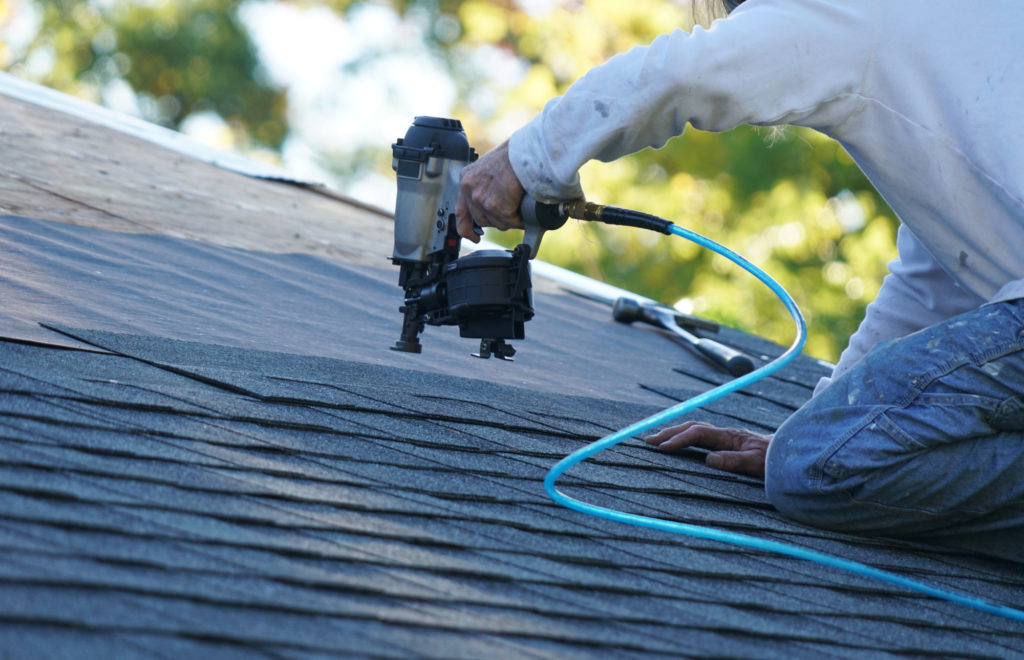
Roofs are under attack! That’s why more than 150,000 Americans work as professional roofers. They fan out across the country, repairing roofs that have worn down over the years.
When your roof is old or worn down, you may be tempted to order a roof replacement. But you don’t have to just yet. Familiarize yourself with roof maintenance strategies and you can keep your roof intact for years to come.
But where should you begin with roof maintenance tips? What things can threaten your roof? What repairs can you make by yourself, and when should you call professionals?
Answer these questions and you can maintain your roof through easy and effective steps. Here are seven essential tips.
1. Inspect Your Shingles
Your shingles are your first line of defense against the elements. They help with rain, snow, sleet, and pieces of debris.
You should inspect your shingles at least once each season. Be thorough with your inspection, looking at the surfaces of the shingles as well as the caulking around them. Caulking can crack or form small holes, creating leaks.
You should replace any missing or crumbling shingles. You can do so yourself with a repair kit. Make sure you replace broken shingles with ones of the same brand, size, and shape, as misshapen shingles can fall off your roof.
2. Think About Sun Exposure
Sun exposure can affect your roof in many different ways. UV rays can heat up your roofing materials, causing them to become misshapen and broken. Sunshine can reflect off of materials like steel, creating glare that makes it hard to see.
However, limiting your sun exposure can lead to algae and moss growing on your roof. If you’re looking to install solar panels, limiting your exposure will hurt your ability to make money off of the panels.
Talk to a roof care company to see what you can do about sun exposure. You may want to put plastics on your roof that can withstand UV rays and extreme temperatures.
3. Clean Your Gutters
Your gutters direct water and debris away from your home. But if they become clogged, they can fill with water and then fall off of your roof, damaging it.
You should inspect your gutters after a storm or every few months. If parts of your gutters are hard to see, you can pour water into your gutters and see if the water comes out.
You can do a few things to remove a clog in your gutters. You can spray water with a high-intensity hose, which can shove a clog or break it down. If something is clogged in your downspout, you can create a seal around the top of the spout and then use a power tool to break the clog down.
4. Kill Algae and Moss
Algae and moss can grow on asphalt, concrete, and wood. Both substances grow in dark and moist areas, and they can multiply quickly. They create stains on your roof, and they can push against your roofing materials, eventually breaking them.
A common roof maintenance mistake is to power-wash your roof to remove algae and moss. Bits of algae may lie in your caulking, and the water from your hose can stay on your shingles and feed the algae. You also risk damaging your shingles and needing summer roof maintenance.
Try using bleach or hydrogen peroxide instead. Bleach can damage your roofing materials, so you can dilute the bleach by mixing it with water.
5. Remove All Pieces of Debris
Branches can fall onto your roof during any storm. Objects in your yard can land on your roof, like pieces of furniture and fencing.
Even sticks can be a problem, as they scratch your shingles and land inside your gutters. You should remove any pieces of debris that fall onto your roof or into your gutters. You can take them out with your hands or use a tool like a grabber reacher.
6. Trim Your Branches
You can reduce your chances of a branch damaging your roof by trimming nearby branches. Check your trees every year to see if any branches are within a few yards of your roof. If you think they can fall down, you should remove them.
You should also keep your eye on very old trees. The signs of a dying tree include brown leaves, peeling bark, and fungus. Dead trees can fall over during rainstorms, landing on your roof and crashing through your house.
You should remove dead trees as soon as possible. Call a landscaping or tree care company to get the tree off your property.
7. Install Insulation
Insulation can reinforce your roofing materials and prevent them from falling in due to debris or snow. It can also allow you to save money on your energy bills, keeping the cool air in your home during the summertime.
You can add any insulation you want. Boards made with gypsum, foam, and fiberglass tend to work well. You can install the boards yourself, or you can ask a renovation company to put them in place.
Start Roof Maintenance Today
Roof maintenance is not complicated. Prioritize your shingles, caulking, and gutters. Do regular inspections of these parts of the roof and take steps to prevent damage from rain and sun exposure.
You can take many steps to maintain your roof. You can remove moss with cleaners, take the debris out of your gutters, and install insulation. But you can get help with removing algae and patching up holes in your roof.
Help is never far away. Fortress Roofing serves Salt Lake City and the surrounding areas. Browse our roofing services today.
